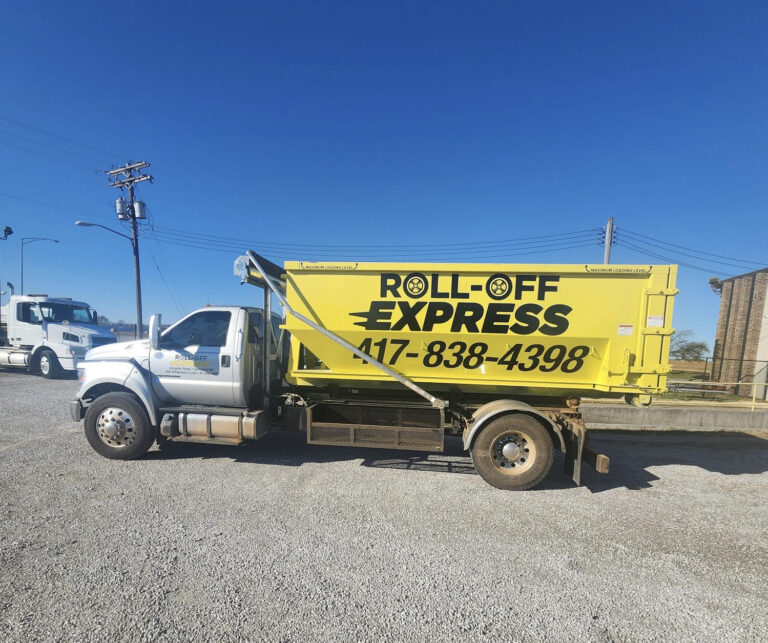

A cubic yard is a universally recognized unit of volume prevalent in the United States. It represents the volume of a cube where each side measures one yard, equivalent to three feet or 36 inches. This unit is extensively employed across various sectors, including construction, landscaping, and waste management, to accurately measure materials such as concrete, topsoil, and various forms of debris.
The initial and best way to calculate the volume needed for any project is to measure the area. Whether you’re spreading landscape materials, pouring concrete, or loading debris into a dumpster, begin by measuring the area in square feet or square yards.
To determine the volume, multiply the area you’ve measured by the height or depth (commonly in inches). For instance, if you need to know the depth of material to fill a given space with a cubic yard, this calculation becomes vital. It’s an essential step whether you’re figuring out how much topsoil is needed for a garden or the amount of concrete for a building project.
For more precise measurements, consider using an online cubic yard calculator. These tools are designed to convert measurements such as square footage into cubic yards efficiently. They are especially useful as they can adjust for different shapes and sizes, offering a more accurate estimate than manual rough calculations.
Check out this online cubic yard calculator.
For more tips on accurate measurement in landscaping and construction projects, read ‘How to Determine Cubic Yards’.
The weight of a cubic yard varies greatly depending on what it contains. A cubic yard of something lightweight like dry leaves will weigh considerably less than one filled with a heavier material such as gravel. This distinction is crucial when considering the weight limits of different dumpster rental sizes.
In terms of volume, understanding what a cubic yard represents is vital for dumpster rental decisions. This knowledge assists in accurately gauging the size of the dumpster needed for your project, helping you to choose between a standard-sized dumpster or a larger option based on the cubic yardage required.
In junk removal, it’s crucial to accurately estimate the cubic yardage of waste to choose the right dumpster size. This estimation is usually done by measuring the debris pile’s dimensions and then converting those measurements into cubic yards. While online cubic yard calculators simplify this task, possessing a basic understanding of the cubic yardage typical for various waste materials is also very beneficial.
A standard sofa may occupy about 1 to 1.5 cubic yards. The cubic yardage for a mattress can range from 0.5 to 1, depending on size.
Common appliances like refrigerators or washing machines typically take up 1 to 2 cubic yards each.
A medium-sized moving box holds around 0.03 cubic yards. Thus, a collection of 30-40 boxes could equate to approximately 1 cubic yard.
When compressed, a cubic yard of leaves or grass clippings can weigh between 300 to 500 pounds. However, these materials can occupy significantly more space when uncompressed.
A pile of branches forming a cube about 3 feet in each dimension would represent roughly 1 cubic yard.
One sheet of drywall occupies about 0.5 cubic feet, so around 54 sheets would make up a cubic yard.
Concrete is often quantified by weight, but a cubic yard of broken concrete can weigh about 2,025 pounds, or just over a ton.
A stack of 2×4 lumber measuring 4 feet high, 4 feet wide, and 8 feet long approximates 1 cubic yard.
A bundle of asphalt shingles covers about 33.3 square feet and occupies 1 cubic foot, so roughly 27 bundles fill a cubic yard.
The carpet from an average room (around 300 square feet) rolled up might occupy about 1 cubic yard.
These estimates are helpful for making informed decisions on dumpster sizes. Remember, the weight of the material is also crucial, especially for heavy items like concrete, where the dumpster’s weight capacity is as important as its volume.
For more accurate calculations, particularly with irregularly shaped items or mixed debris, an cubic yard calculator is advisable. It can adjust for the diverse shapes and densities of different materials, offering a more precise estimate.
Comprehending the concept of cubic yards is crucial when it comes to dumpster rentals. The capacity of dumpsters is generally expressed in cubic yards, with sizes varying from 10 to 40 cubic yards. This metric is key in selecting an appropriately sized dumpster, as it directly relates to the volume of waste you intend to dispose of.
Online cubic yard calculators are invaluable for translating measurements from square feet or cubic feet into cubic yards. They are especially handy for calculating the volume of materials with irregular shapes or for estimates involving cubic inches or cubic meters.
An online cubic yard calculator simplifies the process of converting an area measured in square feet into cubic yards. This tool is incredibly useful for accurately determining the quantity of landscaping materials or construction debris required for various projects.
Estimating the cubic yardage for objects with irregular shapes can be a complex task. It often requires more sophisticated methods than the straightforward multiplication of length, width, and height.
Sometimes, it’s necessary to convert the volume of material from units like cubic inches or cubic meters into cubic yards. This conversion is essential to meet specific project needs or to align with industry norms.
Making the right choice in dumpster size is key for efficient waste management. Underestimating waste volume can lead to the requirement of additional dumpsters, escalating costs. Here are some real-life examples:
For a minor bathroom renovation, a 10-cubic yard dumpster usually suffices, capable of holding about 50-60 sheets of 4×8-foot drywall or an equivalent amount of mixed debris.
Bigger projects in the construction industry, like constructing a new home, might necessitate a 30 to 40-cubic yard dumpster to handle a substantial amount of material. Such sizes can accommodate roughly 180-240 sheets of 4×8-foot drywall or a comparable amount of diverse construction materials.
For residential yard waste projects removing landscape material, including branches, leaves, and grass clippings, a dumpster between 10 to 15 cubic yards is typically adequate.
Using a standard wheelbarrow for reference, which holds about 0.1 cubic yards, can also be helpful. For instance, a 10-cubic yard dumpster would fit approximately 100 full typical wheelbarrow loads.
Standard trash bags typically hold about 3 to 4 cubic feet of waste, meaning that roughly 6-9 of these bags would constitute a cubic yard. This conversion is particularly handy in various situations:
For tasks like clearing out a garage or attic, you can tally the number of trash bags filled and convert this figure to cubic yards to determine the appropriate dumpster size. For instance, 50 trash bags of junk would equate to approximately 5.5 to 8.3 cubic yards.
In the aftermath of a large event, where waste is predominantly bagged, counting the number of bags can offer a quick estimation for the size of dumpster required. For example, 100 bags of event waste would roughly need a dumpster with a capacity of about 11 to 16.7 cubic yards.
For a deeper understanding of effective project management in fields like construction and waste removal, refer to ‘How to Calculate Cubic Yards’ for further insights.
When it comes to large-scale cleanout projects like estate cleanouts, major home renovations, or clearing out commercial properties, employing a systematic approach for estimating cubic yards is crucial. Here are some expert-recommended strategies:
Begin with a visual evaluation of the waste pile. Compare its size to familiar objects, such as the bed of a pickup truck (usually 2-3 cubic yards) or a standard wheelbarrow (around 0.1 cubic yards).
Divide the waste into distinct categories (for example, furniture, construction debris, yard waste), and estimate the volume of each group separately, as different types of materials occupy space differently.
For large and bulky objects, like furniture or appliances, measure their dimensions and calculate their volume in cubic yards. Keep in mind that such items may not compress well, thus taking up more space.
Think about how items can be organized within the dumpster. Placing flat items like plywood or drywall at the bottom and then adding bulkier items on top can maximize space usage.
Generally, it’s advisable to slightly overestimate the amount of waste. This tactic helps account for the various shapes of different items and the potential underestimation of volume. Opting for a dumpster that’s a bit larger than your estimate can be more economical than needing a second one later on.
In real-world applications, measuring cubic yards can be tricky business due to the irregular shapes and diverse densities of materials. Here are some common challenges and how to tackle them:
Many items don’t conform to a perfect cubic shape. For such objects, get a rough estimate of their largest dimensions and calculate their volume as if they were a rectangular prism.
Different materials have varying densities. A cubic yard of light, fluffy materials like feathers will weigh less and occupy less space than a denser material like concrete. Adjust your volume calculations according to the material type.
The degree of material compaction also affects volume estimations. Materials such as soil or gravel compact more in a dumpster compared to less compressible materials like branches or bulky furniture.
When unsure, it’s wise to consult your dumpster rental company for guidance. They usually have considerable experience in estimating the appropriate dumpster size based on the nature and volume of the material.
Taking pictures of your waste or debris can help the rental service provide a more accurate suggestion for the required dumpster size.
Incorporating these considerations can significantly enhance the precision of your cubic yard measurements, leading to a more efficient and cost-effective dumpster rental experience.
A cubic yard, a prevalent volume unit in the U.S., represents the space within a cube where each side is one yard (or three feet) long. This measurement is integral in construction, landscaping, and waste management for quantifying diverse materials.
To begin calculating material volume, first measure the area in square feet or yards. Then, multiply this area by the height or depth (often in inches) to determine the volume. For more precise and effortless estimations, online cubic yard calculators are highly recommended.
The weight of a cubic yard can vary greatly depending on the material, which is a crucial factor in selecting the appropriate dumpster size for your needs.
Accurately estimating cubic yardage is key to choosing the right dumpster size. Knowing the approximate cubic yardage for common waste items like furniture, appliances, and yard debris can greatly aid in this estimation.
Dumpster capacities are typically expressed in cubic yards, with sizes ranging from 10 to 40 cubic yards. Real-world scenarios, from home renovations to yard cleanups, provide practical guidance for selecting the right dumpster size.
Online calculators are invaluable for converting various measurements into cubic yards, particularly when dealing with irregular shapes or a mix of different materials.
In large-scale projects, it’s often better to slightly overestimate to prevent the need for additional dumpsters. Consider the specific nature of your project, including the types of waste and their densities, to make more accurate cubic yard estimates. Professional advice and photographic documentation can also contribute to more precise evaluations.
A thorough understanding of cubic yards and their accurate calculation is essential in sectors like waste management, landscaping, and construction. By integrating these essential insights, you can enhance material estimation and dumpster rental decisions, ultimately leading to more effective project execution and potential cost reductions.
To convert cubic yards to cubic feet, you multiply the number of cubic yards by 27, as there are 27 cubic feet in one cubic yard. For example, 2 cubic yards would be 2 x 27 = 54 cubic feet. This conversion is crucial for projects requiring volume estimations in either cubic feet or cubic yards.
To transform square feet into cubic yards, you first need to convert the area into cubic feet by multiplying the square footage by the height or depth in feet. Then, divide this number by 27 to convert it into cubic yards. For instance, if you have an area of 100 square feet with a depth of 1 foot, the volume in cubic feet is 100 x 1 = 100 cubic feet. Dividing 100 by 27 gives approximately 3.7 cubic yards.
A yard is a unit of linear measurement equal to 3 feet, commonly used to measure length or distance. In contrast, a cubic yard is a unit of volume used to measure the space within a cube with each side measuring one yard. To visualize a cubic yard, think of a cube where each side is 3 feet in length, width, and height.
The capacity of a pickup truck bed, measured in cubic yards, typically ranges from 2 to 3 cubic yards. However, this can vary based on the size of the truck bed. A standard full-size pickup truck bed usually accommodates about 2 cubic yards when filled level to the bed’s top.
Compaction affects cubic yardage by reducing the volume that materials occupy. Compacted materials like soil or gravel take up less space than un-compacted materials. For instance, a cubic yard of loose leaves will occupy more space and be less dense than a cubic yard of compacted soil. Therefore, it’s important to consider the level of compaction when estimating how much material is needed or can fit in a specific space.

Roll-Off Express | LETS TALK TRASH | Dumpster Rentals